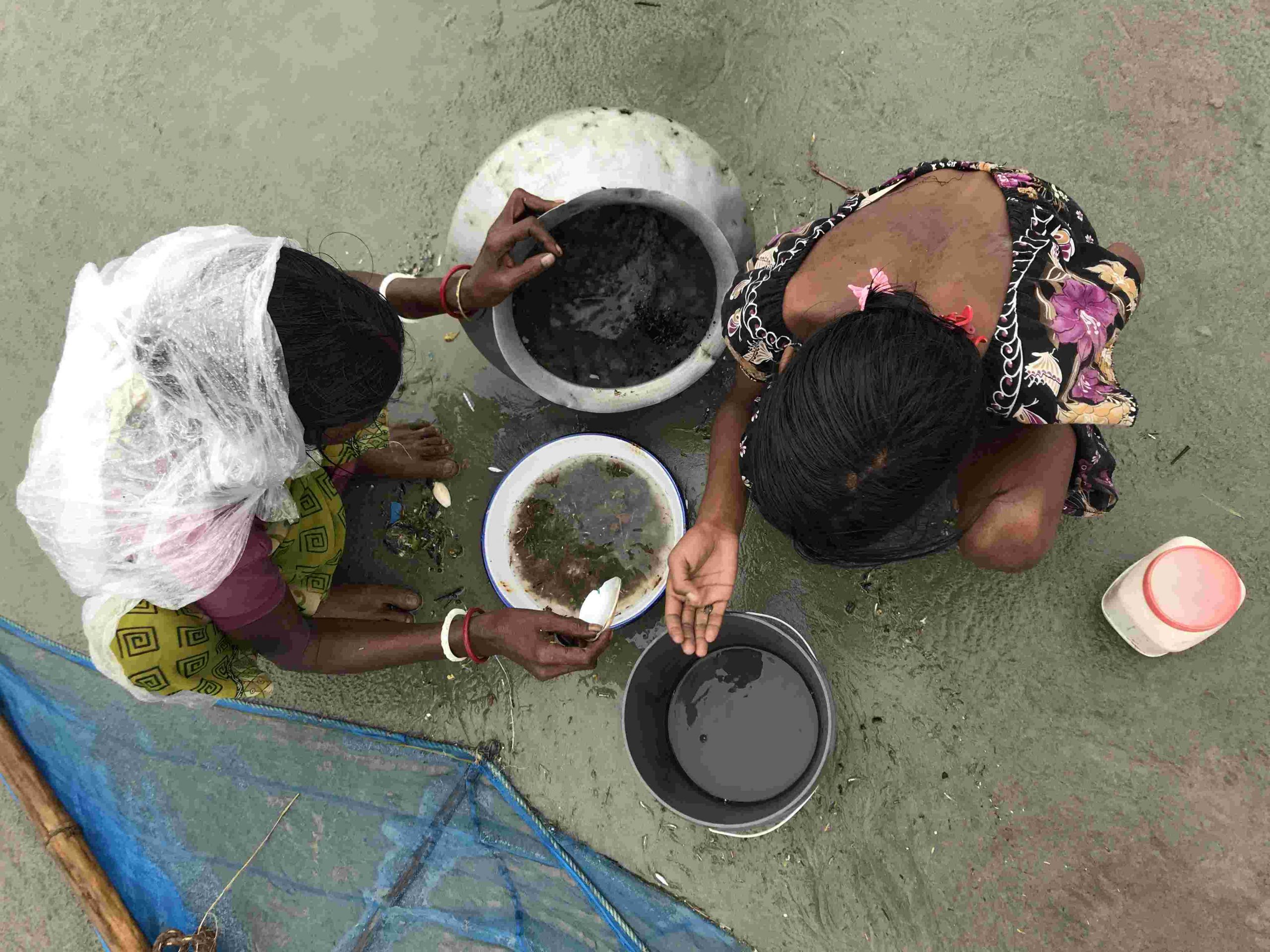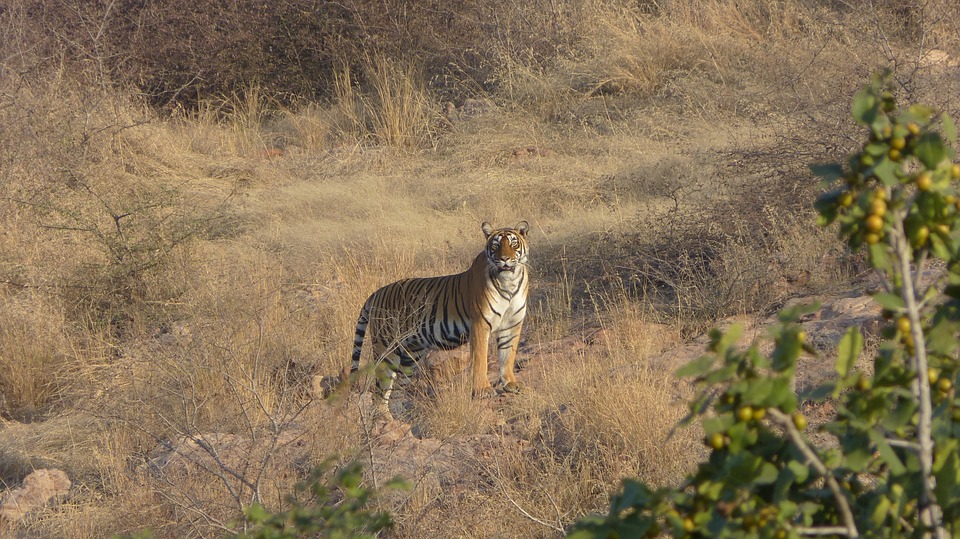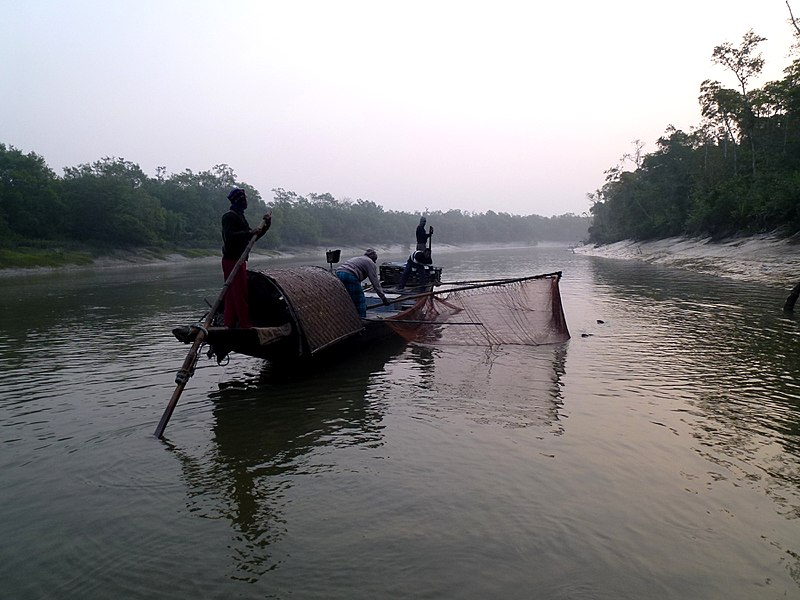The vulnerable fishermen and the ‘tiger widows’ of Sundarbans
The land is shrinking due to the rise in the sea level because of climate change. This is leading to the tiger reserve area to shrink making fishermen vulnerable. The ‘tiger widows’ are still waiting for the compensation from the government


At the mere mention of the word ‘tiger’, Manoranjan fills up with dread. The memories of the large scar of wounds just above his ear on the right side are still fresh. The effect of the wound is such that there is no hair growth in that part and Manoranjan can’t hear anything from his right ear.
Manoranjan, 42, lives on the Gosaba Island of Sundarbans in West Bengal, which has been accorded the status of the world’s largest mangrove forest. When asked about the wound, he narrated the incident that had occurred in 2011. It was April 6, and Manoranjan had taken his boat to fish in the swamped jungle of Netadhubuni, a few miles away from his home. There were four more people with him on the boat. The nets had already been thrown in the morning and were to be removed at noon. All the fish had been gathered from the net. Just when they were about to leave after folding up the nets, a tiger swooped at Manoranjan.

Sundarban stretches from West Bengal to Bangladesh. On the Indian side,
Sunderban extends to an area of about 4,000 sq km. There are about 100 islands in the region, out of which 54 are inhabited by people.
The lives of people living on these islands are full of all kinds of challenges. They can access the mainland only during high tide. After sunset, they remain confined to their islands because the boats do not operate after the evening. There is no good hospital on any of the islands. There are no means of employment. People don’t even have enough land for cultivation. As a result, many people migrate to earn a livelihood.
But, for those who do not want to leave the island looking for employment, the options are limited – either they should be able to live sparsely through
cultivation and barely meet their basic needs, or, for a slightly better life, go to the rugged river basin and do fishing, catch crabs or fetch honey. With the second option, the danger of life is also a given threat, as they have to go to the dense forests, where tigers dwell, to catch fish and crab.

Recalling the accident, Manoranjan said: “That tiger must have been at least 10 feet. It was like watching death swoop in front of me. I had no hope of escaping when suddenly it came to my mind to dive to the left. The paw of the tiger went through the right side of my head badly scratching it. When the other fisherman of the boat mustered up some courage to intimidate the tiger with sticks, it took to the jungle.
The other fishermen then rushed Manoranjan immediately to the hospital for treatment. He was hospitalised for two months. Showing yet another scar on his thigh, he said: “The doctors cut the skin from this part of the thigh and grafted it upon my head. I had to spend Rs 2 lakh on the treatment.”
He added: “At first, I used to fetch honey from the forest, catch fish and crabs. That is how I used to support my family because I have a little land to cultivate.
After that dreadful attack, I have given up going into the jungle.” Manoranjan has 15 Kattha fields. The crops produced from the same field feed Manoranjan, his wife, and two children. They even work for wages in their spare time.

Vanlata wasn’t as lucky as Manoranjan
Only a handful of people were fortunate like Manoranjan to have evaded the claws of such death. There is a large number of people who could not. Vanlata Tarafdar, 49, had gone to the Peerkhali jungle on July 8, 2019 to catch some crab. She had been doing so along with her husband for 15 consecutive years and had never faced any tiger. However, this journey to the jungle on July 8 proved fatal for her.
She had left for to the Peerkhali forest with three other women at 4 AM. The crab comes out of its groove only during the high tide, but, since that day, the high tide was expected around 8 AM, they had waited. With the 8 AM high tide, they managed to grab sufficient haul of crabs and were preparing to leave. Vanlata was walking in the middle when the tiger attacked from the front, grabbed her by the neck, and took her to the jungle.
Gaur Tarafdar, the 60-year-old husband of Vanlata, is physically handicapped. Sitting in the courtyard of his mudhouse, Gaur said: “The tiger always targets its prey first. It decides prior who to hunt. Even though my wife had other women on both sides of the boat, the tiger attacked my wife and took off. We could not even trace her body so far.”
The bodies of those killed by the tiger attack are usually not traced because for a long time after the attack, people are afraid to go to the site of the attack and when they do finally reach there, tigers and other wild animals have already fed up it.
Fishermen going to the risky forests have to register in the block office.
Thereafter, the officers of the block issue passes for the fishermen. The pass is issued for a certain period of time. For three months during the rainy season, the entry into the jungles is prohibited and so the passes are not released for this period. Vanlata Tarafdar had acquired the pass, valid for one-and-a-half months, to go to the jungle on July 7, and had left for the jungle on July 8.
Gaur has four sons. Three of them live separately. Only one son and a daughter- in-law live with Gaur and cultivate upon a leased land. When his wife caught crabs, it used to provide a decent income. Shattered by her death, Gaur has resolved never to let either his son or himself near the jungle.

The tragic death of Anil Mandal
Anil Mandal died in a tiger attack on November 23. On November 22, 2019, Mandal, 65, a resident of Gosaba island, had gone to the Kholakhali forest to catch the crab, but could never return. The story of Mandal is full of misfortune. Prasad Mandal, the nephew of Anil Mandal, said: “He went to the jungle on November 22 and spent the night there while planning to return the next day after catching some crabs. There, he was killed by the tiger. The other fishermen reported the attack to us.”
The kin of Mandal pointed out that he was attacked by a tiger 30 years back, but he managed to survive. According to the Prasad, he was bathing in the river after gathering crabs and fastening his boat when the tiger had attacked him. But luckily for Mandal, the tiger’s jaw was entangled in his dhoti, which gave Mandal an opportunity to escape.
After the dreadful incident, his sons had strictly forbidden him from entering the forest. Mandal agreed. Meanwhile, he went to the Andaman and Nicobar island for a few days. Later, when he returned to the village, he resumed his occasional visits to the jungle. “Going to the jungle to catch fish has its own thrill. It has its pull, which had captivated uncle so he couldn’t keep away from it,” Prasad said.

The tiger attacks have gone up
Of course, Sundarban has never been free from the tiger attack, but it is a fact that there was an unprecedented drop in the incidents of tiger attacks after the 1990s.
Prasad Mandal had grown up in the same decade. He said that earlier fishermen did not face so many tiger attacks. Such incidents have intensified in recent years. Mandal is quite right in saying this as the same is reflected in the figures of tiger attacks in Sundarbans.
The data recorded in Volume-2 of the Animal Diversity, Natural History And Conservation of Forest Directorate of West Bengal, shows that 106 people were killed in 15 years from 1994-1995 to 2010-2011. But, in later years, there was a massive increase in the casualties. According to the data from the Ministry of Environment, Forest and Climate Change provided to the Lok Sabha on June 28 2019, 71 people have died due to tiger attacks in Sundarban in just five years from 2014 to 2018.
If the average of these figures is taken, an average of seven people has died every year due to the tiger attacks between 1994-1995 and 2010-2011 and an average of 14 people every year between 2014 and 2018. An entire neighbourhood in Gosaba is inhabited by women whose husbands have died in these tiger attacks. This street is called ‘Vidhwa pada’ (a lane of widows).

No compensation for tiger attacks
Although there is a provision for compensation by the Forest and Fisheries Department of West Bengal for the death of the permitted fishermen in the tiger attack, there is a lot of red tapism involved. It is impossible to meet the set conditions, so, consequently, no one receives any compensation. Many a times, the kin of the deceased are not even able to prove before the administration that their people have been killed in the tiger attack because there should be a post-mortem report of the corpse for the purpose.
In July 2016, the West Bengal government was asked how many of the 100 fishermen killed due to the tiger attack in the past six years had received compensation. In reply, the government said that in six years, compensation was applied for by only five families, out of which only three families could get compensation of Rs 1 lakh each.
The family of Anil Mandal, who had succumbed to the tiger attack in November 2019, informed that the documents required for compensation have been deposited in the office of the Fisheries and Forest Department, but no compensation has been so far received.
What has caused increased tiger attacks?
Human beings and wildlife have been secure in their respective areas for
centuries. But, the way the encounter between tigers and fishermen has
increased in recent years is a matter of serious concern.
During the investigation into the causes behind such encounters, Gaur shared an important piece of information about the forest and fish, which provides an insight into the matter. He explained: “Fishes and crabs are no longer found at the place where we used to catch them previously, so we have to go two-three kilometres deeper into the jungle.”
The other fishermen of Gosaba also endorsed Gaur’s view. Fishermen say that the increase in salinity in water has affected the arrival of fish, for which they now have to go further into the jungle. This means that the fishermen are trespassing the tigers’ territory; as a result, the tiger attacks are increasing.
But this is not the only reason. Experts also link it to climate change. The available land is shrinking due to the rise in sea level, which is also causing the tiger reserve area to shrink while the tiger population is increasing.On condition of anonymity, a wildlife expert working for a tiger reserve informed: “Every tiger has its territory. When the population of tigers increases, the younger tigers have to look out for newer areas and contest with other male tigers. For tigers to be content, it is vital to extend the area of the forest reserve further.
However, the land mass in Sundarban is shrinking, which irks the tiger and the fishermen have to bear its brunt because tigers feel threatened with fishermen’s entry into their territory.”
A report was released by the Indian Space Research Organisation (ISRO) by
studying satellite photographs. According to this report, 9,990 hectares of Sunderbans have been submerged in water due to erosion in the past 10 years.
According to the World Wildlife Fund (WWF), the sea level in the Sagardweep and adjoining areas of Sundarbans in the Bay of Bengal is increasing by 11 millimeters per annum, while the global level is increasing by just 2 millimeters.
It is mentioned in a chapter of the Volume-2 of Animal Diversity, Natural History and Conservation: “The sea level and its related changes in Sundarbans are a serious threat to biodiversity. The Tsunami in the year 2005 has led to the salinity in the waters of the Western part of Sundarbans. In the past three decades, 20 per cent of the Royal Bengal Tiger’s domain – the Sundarban Tiger Reserve area — has been submerged in water. From 1969 to 2009, 210/247 sq km area has been swallowed up by the river.”

The experts’ opinion
The experts also point out that due to climate change, tigers are not able to get food (deer, monkey-like animals). Because of the high water, these animals (upon whom the tigers prey) are fleeing to another place in search of safe havens. The fishermen who go to the jungles for fishing said that earlier there were a large number of deer in the jungles, but now their number has gone down substantially. This is also one of the reasons why the tigers attack the fishermen.
Jayant Kumar Mallick, who has served an important post in the Forest Directorate of the West Bengal government, has also done a lot of work on Sundarbans. He said: “Some part of the forest comes into the safe area. In these places, those fishermen who have permits can go. But many fishermen also go to the jungles without permits. In the jungles, especially in the narrow drains, there is a high inflow of fish and crabs. But these drains also have a higher risk as here they can easily fall victim to the tigers.”
Mallick, pointing to the dangers posed by the weather changes, said: “With the increase in climate threats in the Southern coastal areas of Sundarbans, tigers and their prey are turning north. But, in the Northern region, it is very difficult for a tiger to hunt and they get tired.”
He shared another interesting thing about the tiger attacks on fishermen. “When fishermen’s entry into the tiger domain intensifies, they become easy prey for hungry tigers because hunting deer or other animals involves chasing them, but it is not so in case of the fishermen who can run as swiftly as the animals,” Mallick said.

The fishermen’s dilemma
It is known to the fishermen that getting into the tiger area may also cost them their life. If a fisherman is reported to have been killed by a tiger attack, it unsettles them deeply and they stop going to the jungles for a few days. However, they don’t have many options, so braving death they have to take to the forests.
Recognising the fishermen’s problems, the West Bengal government is giving employment-based training to the children of fishermen so that they need not go to the jungles to catch fish and crab, but can be employed at home.
Manturam Pakhira, the Sunderban Development Minister of West Bengal, said: “On behalf of the government, the youth are trained in sewing, TV-radio and mobile repairing, tube well repairs, beautician, etc. After the training, the interested youth also get financial assistance so that they can start employment.”
Local people said that after this training, some youths have started self- employment and they are more or less satisfied, but no change has occurred beyond that so far.
Pakhira said: “If fishermen enter the tiger area, they will be attacked. We are also running awareness programmes about it. The fishermen are being told not to go to the tiger reserves.” But, in fact, fishermen need an alternative and easy employment opportunities more than awareness. Because, even after becoming aware, they have to go to the forests and approach the deep forests in order to earn for themselves even at the risk of their life.
(Umesh Kumar Ray is an independent journalist. This story is the part of the National Foundation for India fellowship).

